Are you in the process of building or renovating your home and trying to decide between gable roof vs hip roof? Well, look no further because this article will provide you with a comprehensive comparative analysis of these two popular roofing styles.
When it comes to roofing options, gable roofs, and hip roofs are among the most common choices due to their functionality and aesthetic appeal.
In the first paragraph, we will discuss what exactly a gable roof is and why it may be a suitable choice for your home. A gable roof is characterized by its triangular shape, with two sloping sides that meet at a ridge in the middle. This type of roof provides excellent ventilation and allows for maximum space utilization in attics or upper floors. Additionally, gable roofs are relatively easy to construct and repair, making them a cost-effective option for homeowners. However, they may not be as resistant to high winds compared to other types of roofs.
In the second paragraph, we will explore what a hip roof is and highlight the unique features that set it apart from gable roofs. So if you’re ready to dive into the world of roofing styles, keep reading!
Introduction
When it comes to choosing the right roof design for your home, it’s important to consider factors such as aesthetics and functionality.
In this discussion, we’ll provide an overview of two popular roof designs: the gable roof and the hip roof.
By understanding the characteristics and advantages of each design, you can make an informed decision that best suits your needs and preferences.
Importance of choosing the right roof design
Choosing the right roof design is crucial because it determines the overall aesthetic appeal and functionality of your home. The roof is one of the most visible parts of a house, and it plays a significant role in defining its architectural style.
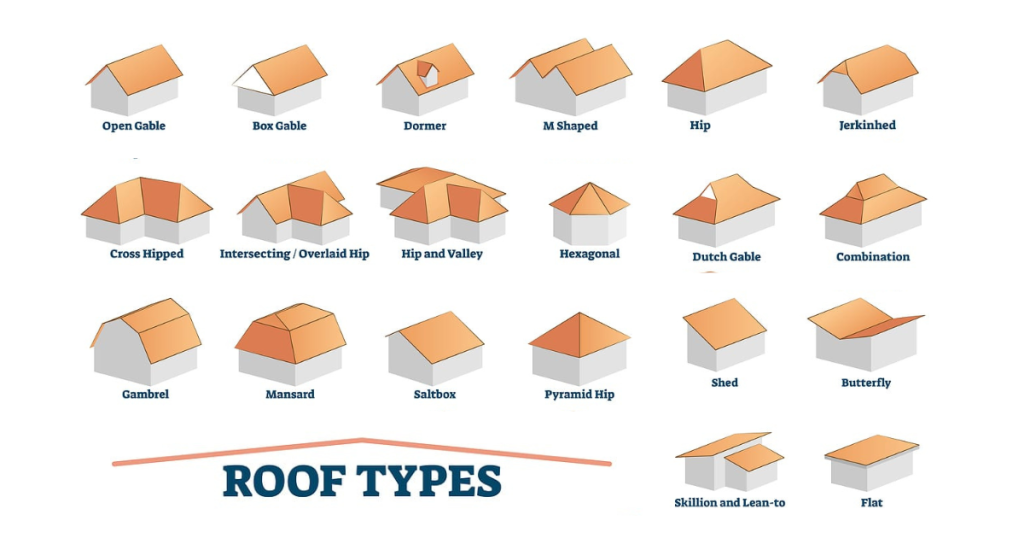
Whether you opt for a gable roof or a hip roof, it will greatly impact the look and feel of your house. Additionally, the right roof design can also enhance the functionality of your home by providing better insulation, ventilation, and protection against weather elements. Therefore, taking the time to carefully consider which design suits your needs and preferences is essential.
When choosing between gable roofs and hip roofs, you need to evaluate various factors such as climate conditions, cost considerations, maintenance requirements, and personal preferences. Each design has its own set of advantages and disadvantages that you should take into account before making a decision.
In the following section about the overview of gable roofs and hip roofs, we will delve deeper into these two popular options to help you make an informed choice for your home.
Overview of a gable roof and hip roof
To understand the difference between a gable roof and a hip roof, let me explain their distinct features and benefits. A gable roof is one of the most common roof designs characterized by its triangular shape. It consists of two sloping sides that meet at a ridge in the middle, forming a gable at each end. The steep slope allows for efficient water drainage, making it ideal for areas with heavy rain or snowfall. Additionally, the triangular shape provides more attic space, allowing for better ventilation and insulation.
On the other hand, a hip roof has slopes on all four sides that meet at a ridge point. Unlike the sharp angles of a gable roof, a hip roof has gentler slopes which make it more resistant to strong winds. This makes it an excellent choice for regions prone to hurricanes or cyclones. Moreover, the design of a hip roof offers more stability and durability compared to other types of roofs. Its evenly distributed weight ensures better load distribution and reduces stress on the walls of your home.
Now that you have an overview of gable roofs and hip roofs, we can delve deeper into understanding the unique aspects of each type individually. Let’s start with exploring the features and benefits of a gable roof design :
Gable Roof
In this discussion, we will focus on the gable roof. A gable roof is a type of roofing system that features two sloping sides that meet at a ridge in the middle. It is characterized by its triangular shape and is commonly seen in residential buildings.
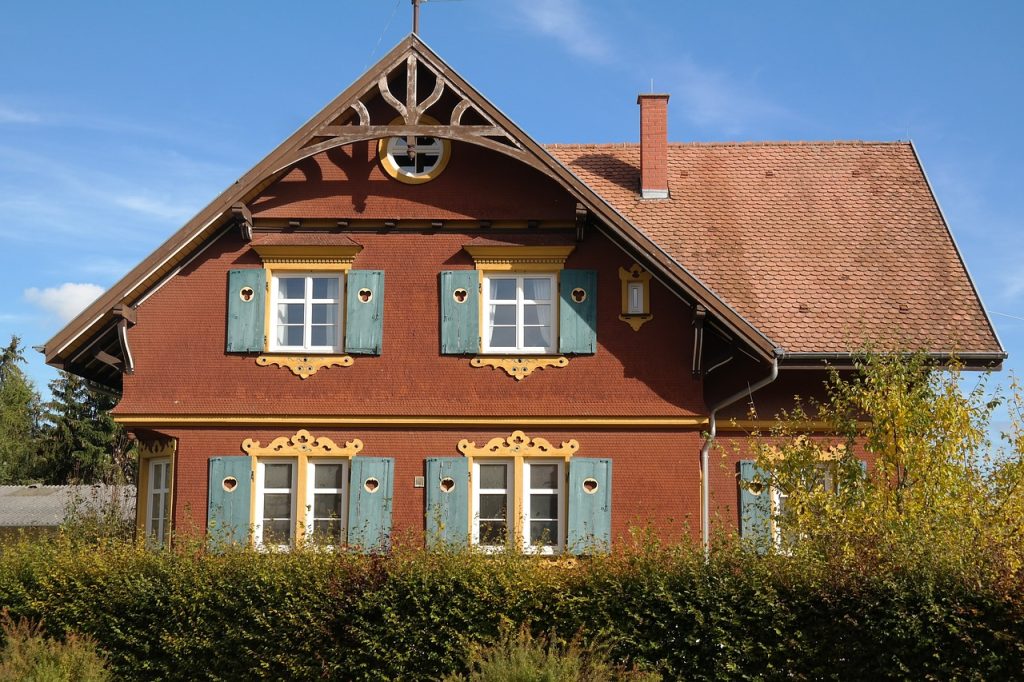
This type of roof offers several advantages such as easy construction, effective water drainage, and increased attic space. However, some disadvantages to consider include susceptibility to strong winds and potential leakage issues at the gable ends.
Definition and characteristics
When it comes to roofing options, you’ll want to consider the definition and characteristics of both gable roofs and hip roofs.
A gable roof is a type of roof that has two sloping sides that meet at a ridge in the middle. It forms a triangular shape, with the walls underneath extending all the way up to the roofline. Gable roofs are known for their classic and timeless appearance, making them a popular choice for many homeowners.
Some key characteristics of gable roofs include:
- High pitch: Gable roofs have a steep slope, which allows for efficient water drainage and helps prevent leaks.
- Attic space: The vertical walls created by the gable roof design provide ample space for an attic or storage area.
- Ventilation: Gable roofs often feature triangular vents on either end, promoting better airflow and reducing heat buildup in the attic.
- Easy construction: Gable roofs are relatively simple to build compared to other roof types, making them cost-effective and time-efficient.
Transitioning into the subsequent section about the advantages, it’s important to note that these defining features contribute to several advantages of gable roofs over hip roofs.
Advantages
When it comes to cost-effectiveness, the gable roof has an advantage over the hip roof. It’s simpler and therefore less expensive to construct.
Additionally, the gable roof offers enhanced attic space and ventilation compared to its counterpart.
Cost-effectiveness
Save money with a gable roof or a hip roof – which is more cost-effective? When it comes to cost, gable roofs have the upper hand. They are simpler in design and require fewer materials, making them generally more affordable than hip roofs. Additionally, their straightforward construction process leads to lower labor costs.
However, it’s important to consider long-term savings as well. Hip roofs offer better stability and wind resistance, reducing the risk of damage during storms. This can potentially save you money on repairs and insurance premiums in the future.
Transitioning into the next section about the simplicity of construction, both gable roofs and hip roofs have their own advantages beyond just cost-effectiveness.
Simplicity of construction
Building a gable roof or a hip roof is as easy as pie! When it comes to the simplicity of construction, both types of roofs have their pros and cons. A gable roof is generally easier and faster to build due to its simple design and fewer materials needed. It consists of two sloping sides that meet at a central ridge, forming a triangular shape. On the other hand, a hip roof has more complex angles and requires more skill and time to construct. It has four sloping sides that meet at a ridge, creating a more symmetrical look. To better understand the differences between the two, let’s take a look at this table:
| Aspects | Gable Roof | Hip Roof |
|---|---|---|
| Construction | Easier | More Complex |
| Stability | Good | Excellent |
| Style | Traditional | Modern |
| Cost | Lower | Higher |
As seen in the table above, gable roofs are simpler to build compared to hip roofs but may lack the modern aesthetic appeal that hip roofs offer. Now let’s move on to discussing another important aspect: enhanced attic space and ventilation.
Enhanced attic space and ventilation
Imagine yourself in a spacious attic with ample ventilation, allowing fresh air to circulate freely and keeping the space cool and comfortable. This is one of the advantages of having a gable roof or a hip roof.
Both types of roofs provide enhanced attic space and ventilation, creating an ideal environment for storage or even turning it into a living area. The steep slopes of gable roofs offer more headroom in the attic, making it easier to move around and access stored items. Additionally, the triangular shape of gable roofs allows for better airflow through vents or windows, promoting proper ventilation and preventing moisture buildup.
On the other hand, hip roofs also provide enhanced attic space but feature slightly different advantages. With their four sloping sides, hip roofs offer more overall attic space compared to gable roofs. This can be advantageous if you require more room for storage or if you plan to convert your attic into a living space such as an extra bedroom or office. Moreover, hip roofs have a more compact design which can enhance stability during strong winds or storms.
However, despite these benefits, both types of roofs also have their disadvantages that should be considered before making a decision about which one suits your needs best…
Disadvantages
When it comes to the disadvantages of gable roofs, there are a few key points to consider.
First, they can be vulnerable to high winds due to their triangular shape and open ends. This can potentially lead to damage or even complete roof failure in severe weather conditions.
Additionally, gable roofs have a higher potential for leaks and water damage compared to hip roofs because of their intersecting roof planes.
Lastly, gable roofs have limited resistance to extreme weather conditions such as hurricanes or heavy snowfall, making them less suitable for areas prone to these types of weather events.
Vulnerability to high winds
Despite their sleek design, hip roofs are no match for the sheer force of a hurricane. They can be easily torn apart like tissue paper. The sloping sides and lack of vertical walls make hip roofs more vulnerable to high winds compared to gable roofs. Hip roofs’ absence of flat surfaces and overhangs allows wind to create uplift forces that can cause significant damage.
On the other hand, gable roofs have an aerodynamic shape that helps them withstand strong winds. They redirect airflow over the roof surface. Gable roofs also have triangular ends, providing additional stability against high winds. This makes gable roofs a more reliable choice in areas prone to hurricanes or severe storms.
However, vulnerability to high winds is just one aspect of roof performance. Another crucial factor is the potential for leaks and water damage caused by heavy rain or snowfall.
Potential for leaks and water damage
Now that you understand the vulnerability of gable roofs and hip roofs to high winds, let’s explore another important aspect: their potential for leaks and water damage.
When it comes to protecting your home from water infiltration, both types of roofs have their strengths and weaknesses. With a gable roof, the sloping sides create a natural runoff for rainwater, minimizing the risk of standing water on the roof. However, if not properly constructed or maintained, gable roofs can be prone to leaks at the points where the two slopes meet.
On the other hand, hip roofs provide better protection against leaks due to their pyramid-like shape and multiple slopes. The intersecting planes reduce the chances of rainwater seeping through vulnerable areas. Nevertheless, hip roofs may still experience leakage issues if there are inadequate flashing or sealing around vents and chimneys.
To sum up this section about potential leaks and water damage in gable roofs versus hip roofs, it’s crucial to consider proper construction techniques and regular maintenance to minimize any risks associated with both types of roofing systems.
Limited resistance to extreme weather conditions
Extreme weather conditions can pose a significant challenge for both types of roofs, highlighting the need for adequate protection and maintenance. Gable roofs, with their steep slopes, may be more prone to damage from high winds and heavy rain. The large flat surfaces of the roof planes in gable roofs can create uplift forces during strong winds, increasing the risk of roof failure.
Additionally, if they’re not properly installed and sealed, gable roofs can allow water to penetrate through gaps or vulnerable areas such as valleys and flashing points. Hip roofs, on the other hand, offer better resistance to wind due to their sloping sides that reduce uplift forces. However, they’re still susceptible to leaks and water damage if they’re not maintained properly.
Transitioning into the subsequent section about hip roofs: Despite these challenges, hip roofs have some advantages over gable roofs when it comes to extreme weather conditions.
Hip Roof
In a hip roof, all sides slope downwards to the walls. This type of roof is known for its triangular shape and is commonly seen in residential buildings.
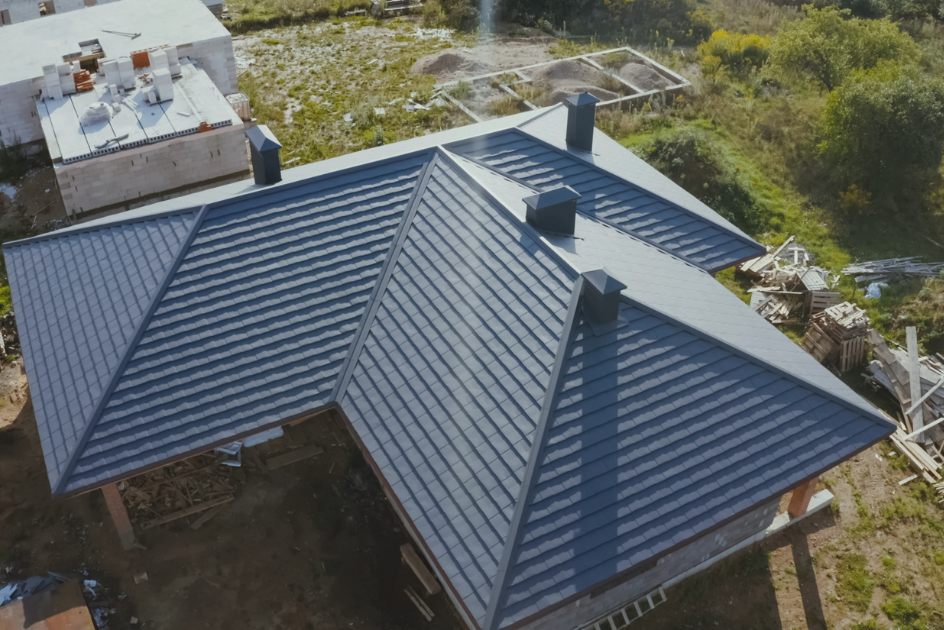
One advantage of a hip roof is that it provides better resistance against strong winds compared to other types of roofs. However, a disadvantage of a hip roof is that it tends to be more complex and expensive to construct due to its multiple slopes and corners.
Definition and characteristics
Let’s explore the definition and characteristics of gable roofs versus hip roofs, shall we?
Gable roofs are one of the most common roof types, characterized by their triangular shape. They consist of two sloping sides that meet at a ridge in the middle, forming a peak. One key characteristic of gable roofs is their simplicity in design. This makes them easier to construct and less expensive compared to other roof styles. Additionally, gable roofs provide excellent ventilation due to their steep slopes, allowing hot air to escape easily from the attic.
Gable roofs have a classic and timeless appearance. They offer more interior space as they create an additional room called an attic. The simple design allows for efficient rainwater drainage. Gable roofs can be easily adapted to different architectural styles.
Now let’s move on to discussing the advantages of gable roofs over hip roofs.
Advantages
When it comes to comparing gable roofs and hip roofs, there are several advantages to consider.
First, gable roofs offer enhanced stability and durability, making them a reliable choice for homeowners.
Additionally, their design provides excellent wind resistance, which is especially beneficial in areas prone to strong gusts.
Lastly, gable roofs offer greater protection against leaks and water damage compared to hip roofs, ensuring a more secure and watertight structure.
Enhanced stability and durability
Enhanced stability and durability are key factors to consider when deciding between a gable roof or a hip roof. Both types of roofs have their own advantages, but when it comes to stability and durability, they differ in certain aspects. To illustrate this, let’s compare the two roof types in terms of their performance in different weather conditions.
| Weather Conditions | Gable Roof | Hip Roof |
|---|---|---|
| High Winds | Moderate | Excellent |
| Heavy Snowfall | Fair | Good |
| Earthquakes | Poor | Average |
| Rainfall | Good | Good |
| Hail | Poor | Fair |
As shown in the table above, a gable roof offers moderate wind resistance compared to the excellent wind resistance provided by a hip roof. This means that a hip roof is better equipped to withstand strong winds without sustaining significant damage. Additionally, when it comes to heavy snowfall, both types of roofs perform reasonably well with the hip roof having a slight advantage. However, in terms of earthquakes and hailstorms, neither type of roof performs exceptionally well. Therefore, if enhanced stability and durability are your main concerns, opting for a hip roof would be the more suitable choice.
Excellent wind resistance
With its ability to withstand even the fiercest winds, the hip roof stands tall as a fortress against nature’s fury. The design of a hip roof features slopes on all sides, which allows for better wind resistance compared to a gable roof.
This means that during strong storms or hurricanes, the hip roof is less likely to be damaged or blown off by powerful gusts of wind. The sloping sides help to distribute the force of the wind evenly across the structure, reducing the chances of structural failure.
Additionally, the overhanging eaves of a hip roof provide added protection by diverting wind away from the walls and windows of a house. This not only enhances stability and durability but also helps to minimize any potential damage caused by high winds.
With its exceptional wind resistance capabilities, the hip roof ensures that your home remains secure even in severe weather conditions.
Transitioning into the subsequent section about ‘greater protection against leaks and water damage’, it is important to consider how this feature further contributes to safeguarding your home from various elements without compromising its structural integrity or aesthetics.
Greater protection against leaks and water damage
Choose the hip roof for your home and experience greater protection against leaks and water damage. With a hip roof, you can rest easy knowing that your home is safeguarded from potential water infiltration. Here are five reasons why the hip roof provides superior protection:
- The sloping design of a hip roof helps to shed water efficiently, preventing it from pooling or accumulating on the surface.
- The overhanging eaves of a hip roof provide extra coverage, directing rainwater away from the walls and foundation of your home.
- Hip roofs have fewer vulnerable seams and joints compared to gable roofs, reducing the likelihood of leaks occurring.
- The absence of vertical walls in a hip roof minimizes the risk of water seepage through cracks or gaps in siding materials.
- Hip roofs are known for their durability and resistance to extreme weather conditions, ensuring long-term protection against leaks.
By choosing a hip roof, you can feel confident that your home will be shielded from potential water damage.
Now let’s explore some disadvantages associated with this roofing style.
Disadvantages
When it comes to the disadvantages of hip roofs, there are a few key points you should consider.
First, the increased complexity of construction can make the process more time-consuming and challenging.
Additionally, hip roofs tend to be higher in cost compared to gable roofs due to their more intricate design.
Lastly, these roofs often have limited attic space and ventilation, which can impact the functionality and comfort of your home.
Increased complexity of construction
Building a hip roof may seem intimidating at first, but once you see the elegance and sophistication it adds to your home, you’ll be proud of the complex craftsmanship involved. The increased complexity of construction is one of the main disadvantages of hip roofs compared to gable roofs. However, this added complexity brings numerous benefits such as enhanced durability and better resistance against strong winds. To illustrate this point further, let’s compare the two types of roofs in terms of their construction complexities:
| Construction Aspect | Gable Roof | Hip Roof |
|---|---|---|
| Number of Rafters | Fewer | More |
| Support Structure | Simpler | More intricate |
| Roofing Materials | Less diverse | More diverse |
As you can see from the table above, building a hip roof requires more rafters and a more intricate support structure compared to a gable roof. Additionally, hip roofs offer greater flexibility in terms of roofing materials due to their unique design. Despite these additional complexities, opting for a hip roof can greatly enhance the overall aesthetic appeal and architectural value of your home. Transitioning into the subsequent section about ‘higher cost compared to gable roofs’, it is important to consider that with increased complexity comes higher costs.
Higher cost compared to gable roofs
Now that you understand the increased complexity of constructing a hip roof, let’s talk about another drawback: the higher cost compared to gable roofs.
When it comes to building a hip roof, the additional materials and labor required can significantly increase the overall cost of construction. The complex design and multiple slopes make it more time-consuming and challenging for builders, which translates into higher expenses for homeowners.
While gable roofs are simpler and easier to construct, hip roofs require additional expertise and skill, leading to increased costs. However, despite this disadvantage, hip roofs offer unique aesthetic appeal and better resistance against strong winds.
Moving on to the next section about limited attic space and ventilation…
Limited attic space and ventilation
One downside to hip roofs is that they have less attic space and ventilation, which can be a challenge for those who need extra storage or want better air circulation. The design of hip roofs creates sloping sides on all four sides of the roof, resulting in limited usable space in the attic. This can make it difficult to store large items or create additional living areas.
Furthermore, the reduced ventilation in hip roofs can lead to poor air quality and increased moisture levels, which may contribute to mold growth or other issues. However, despite these limitations, hip roofs offer several advantages over gable roofs, including improved wind resistance and a more aesthetically pleasing appearance.
These key differences between gable roof vs hip roof will be further discussed in the following section.
Key Differences between Gable Roof vs Hip Roof
When comparing a gable roof and a hip roof, there are several key differences to consider.
First, the roof shape and aesthetics vary greatly between the two styles. A gable roof typically has a triangular shape with sloping sides, while a hip roof has a more complex design with multiple slopes coming together at the top.
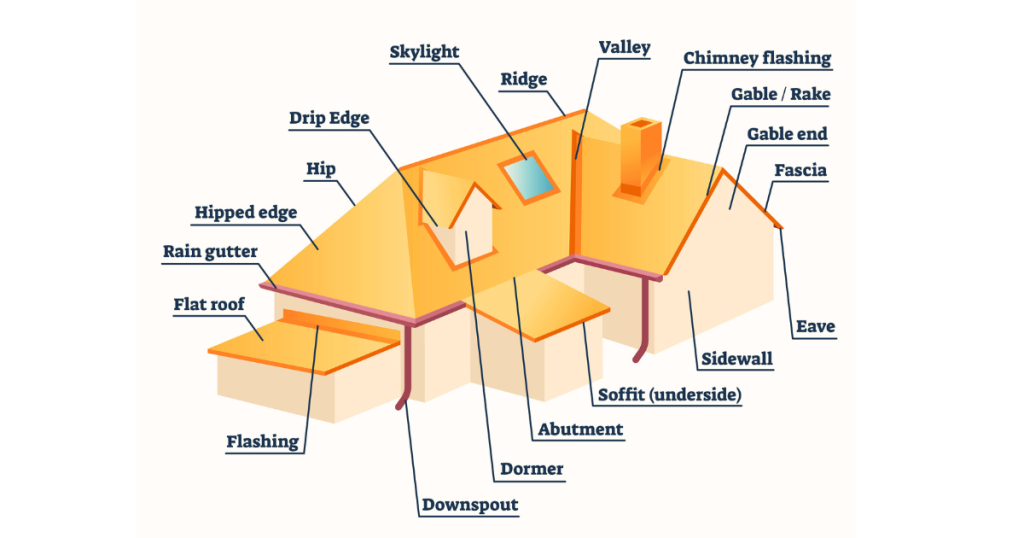
Secondly, in terms of structural stability and wind resistance, the hip roof tends to be more durable due to its sloping sides that provide better support against strong winds.
Lastly, construction complexity and cost differ as well, with gable roofs being simpler and less expensive to build compared to hip roofs which require more materials and expertise.
Roof shape and aesthetics
Imagine walking down a suburban street, admiring the houses, and you notice how the gable roof on one home gives it a classic and traditional look, while the neighboring house with a hip roof exudes a modern and sleek aesthetic.
The shape of a roof plays a significant role in determining the overall appearance of a house. With its triangular shape and sloping sides, the gable roof creates an iconic silhouette that is instantly recognizable. On the other hand, the hip roof features sloping sides that meet at a ridge to form a gentle slope on all four sides of the building. This design gives it a more contemporary feel compared to the gable roof.
To add depth to this discussion, let’s take a closer look at some key characteristics of each roof type:
- Gable Roof: The steep slopes of this roof style provide excellent water drainage during rainy seasons. It also allows for easy installation of dormers or additional living spaces in attics. Additionally, gable roofs offer increased ventilation due to their high peaks.
- Hip Roof: This style provides better resistance against strong winds as all sides are inclined. It also offers more stability than gable roofs because there are no vertical ends that can catch the wind. Moreover, hip roofs tend to have overhanging eaves which provide additional protection from rainwater.
As we transition into discussing structural stability and wind resistance in the subsequent section, it’s important to understand that both gable and hip roofs have their own advantages when it comes to aesthetics and architectural styles.
Structural stability and wind resistance
Let’s delve into the remarkable structural stability and impressive wind resistance of these two roof types. When it comes to structural stability, both gable roofs and hip roofs have their strengths.
Gable roofs, with their triangular shape, provide excellent support against vertical loads such as snow accumulation. The steep slope allows for efficient shedding of water and prevents pooling on the roof surface. This design also makes gable roofs less prone to leaks compared to hip roofs.
On the other hand, hip roofs are known for their superior wind resistance. The sloping sides of a hip roof create multiple faces that work together to distribute wind pressure evenly. This reduces the risk of uplift and enhances overall stability during strong winds or storms. Additionally, the overhangs on all sides of a hip roof provide added protection by minimizing wind-driven rain from entering underneath.
Now let’s transition into the subsequent section about construction complexity and cost without missing a beat. As we explore further into these aspects, it becomes evident that they play crucial roles in determining which type of roof is more suitable for your needs and budget.
Construction complexity and cost
Now, we’ll delve into the construction complexity and cost, revealing surprising differences between these two roof types.
When it comes to construction complexity, gable roofs are generally simpler and easier to build compared to hip roofs. Gable roofs have a straightforward design with two sloping sides that meet at a ridge in the middle. This simplicity allows for quicker installation and reduces labor costs.
On the other hand, hip roofs have more complex designs with all sides sloping downwards towards the walls of the building. The additional angles and connections make hip roof construction more time-consuming and intricate, resulting in higher labor costs.
In terms of cost, gable roofs tend to be more affordable than hip roofs due to their simpler construction. The straightforward design of gable roofs requires fewer materials and less labor compared to hip roofs. This translates into lower overall costs for homeowners or builders.
Additionally, gable roofs often have larger attic spaces which can be utilized for storage or living areas without requiring extensive modifications or additions. This further adds value to the overall cost-effectiveness of gable roof constructions.
With this understanding of the construction complexity and cost differences between gable roofs and hip roofs, let’s move on to exploring another important aspect: attic space and ventilation.
Attic space and ventilation
Discover the surprising benefits of having ample attic space and proper ventilation in your home.
First, having a spacious attic allows for the storage of seasonal items, such as holiday decorations or winter clothes, keeping them out of sight and freeing up valuable living space. Additionally, an attic can serve as a versatile area for hobbies or even be converted into an extra room. Imagine having a cozy home office or a playroom for the kids tucked away in the attic!
Proper ventilation is equally important for maintaining a healthy home environment. Ventilation helps remove excess heat and moisture from your house, preventing the growth of mold and mildew. It also improves indoor air quality by circulating fresh air throughout the rooms. With adequate ventilation, you can enjoy cleaner and healthier air inside your home, reducing the risk of respiratory issues and allergies.
Transitioning to the subsequent section about ‘resistance to leaks and water damage,’ it’s crucial to consider how both ample attic space and proper ventilation contribute to safeguarding your home against potential water-related issues.
Resistance to leaks and water damage
One of the key advantages of having ample attic space and proper ventilation is that it helps protect your home from leaks and water damage. With a gable roof, you can take advantage of the steep slope which allows rainwater to quickly run off, preventing any potential pooling or leakage.
Additionally, gable roofs often have large overhangs which provide extra protection against water entering the house. Proper ventilation in the attic also plays a crucial role in preventing water damage. By allowing air to circulate effectively, it reduces the likelihood of condensation and moisture buildup, which can lead to mold growth and structural damage.
Furthermore, hip roofs offer their own set of advantages when it comes to resistance against leaks and water damage. The unique design of a hip roof with its sloping sides creates additional barriers for rainwater compared to gable roofs. The multiple slopes distribute the weight of accumulated snow or rainfall more evenly, reducing the risk of leaks caused by excessive pressure on specific areas. However, it’s important to note that while hip roofs provide better overall protection against leaks, they may require additional maintenance due to their complex structure.
Considering these factors related to resistance against leaks and water damage, both gable roofs and hip roofs have their own strengths.
Now let’s delve into other factors you should consider when choosing between these two roof types without delay:
Factors to Consider When Choosing Between Gable Roof Vs Hip Roof
When deciding between a gable roof and a hip roof, there are several factors to consider.
First, think about the climate and weather conditions in your area. A gable roof is better suited for areas with heavy snowfall, while a hip roof is more resistant to strong winds.
Second, consider your architectural style and design preferences. A gable roof provides more attic space and allows for larger windows, while a hip roof offers a more streamlined and modern look.
Lastly, think about your budget and cost considerations, as well as the long-term maintenance and durability of each option. Additionally, check local building codes and regulations to ensure compliance with any restrictions or requirements specific to your area.
Climate and weather conditions
In areas with extreme weather conditions, a hip roof is like having an impenetrable fortress protecting your home. The design of a hip roof allows for better resistance against strong winds, making it more suitable for regions prone to hurricanes, tornadoes, or heavy snowfall.
The sloping sides and the inward slope at the top of a hip roof create a sturdy structure that can withstand the force of gusty winds without easily getting damaged. Additionally, the overhangs on all four sides provide additional protection by preventing rainwater from seeping into the walls.
With a hip roof, you can have peace of mind knowing that your home is well-equipped to handle even the harshest weather conditions.
When considering climate and weather conditions in relation to roofing options, it’s important to think about how these factors will affect not only the durability but also the overall style and design preferences of your home.
Transitioning into the subsequent section about architectural style and design preferences…
Architectural style and design preferences
Architectural style and design preferences play a crucial role in determining the overall aesthetic appeal of your home. When choosing between a gable roof and a hip roof, it’s essential to consider how each option aligns with your desired architectural style.
A gable roof, with its classic triangular shape, is often associated with traditional or colonial-style homes. This type of roof can provide a more dramatic and visually striking look to your house, adding character and charm.
On the other hand, a hip roof offers a more modern and contemporary feel. With its gently sloping sides, this style is perfect for those who prefer a sleek and streamlined design.
To convey a deeper meaning to the audience, consider the following points:
- Architectural harmony: The choice between gable and hip roofs should complement the overall architectural style of your home. Ensure that your preferred option enhances the visual coherence of your property.
- Regional influence: Different regions have specific architectural styles that are commonly associated with particular types of roofs. Consider whether you want to embrace or deviate from these regional influences when making your decision.
- Personal taste: Ultimately, choose a roof style that resonates with your personal taste and preferences. Your home is an extension of yourself, so make sure it reflects who you are.
Considering these factors will help you make an informed decision about which type of roof best suits your architectural aspirations.
Read More: Best Guide: Construction Of Commercial Fit Outs For Business
Now let’s transition into discussing another important aspect: budget and cost considerations when comparing gable roofs versus hip roofs.
Budget and cost considerations
Affordability and expenses are vital factors to consider when weighing the financial impact of different roofing styles. When it comes to budget and cost considerations, gable roofs tend to be more affordable compared to hip roofs. This is because gable roofs have a simpler design and require fewer materials and labor during installation. Additionally, the straightforward construction of gable roofs allows for easier maintenance and repairs, which can save you money in the long run.
On the other hand, hip roofs are generally more expensive due to their complex design and increased labor requirements. The multiple slopes and angles of hip roofs make them more challenging to construct, resulting in higher installation costs. Furthermore, hip roofs often require additional structural support due to their increased weight distribution. These extra expenses can add up quickly and should be taken into account when considering your overall budget for roofing.
Considering both upfront costs and potential long-term savings, affordability is a crucial aspect to consider when choosing between gable roof versus hip roof designs. However, it’s important not only to focus on immediate expenses but also to take into account the long-term maintenance and durability factors that will be discussed in the subsequent section about ‘long-term maintenance and durability.’
Long-term maintenance and durability
When it comes to long-term maintenance and durability, you can rest easy knowing that both gable roofs and hip roofs offer reliable protection and require minimal upkeep.
Both roofing styles are designed to withstand various weather conditions and provide a sturdy structure for your home. Gable roofs have a simple design with two sloping sides, which makes them easier to maintain. With regular inspections and occasional cleaning, such as removing debris or trimming nearby trees, you can ensure the longevity of your gable roof.
Similarly, hip roofs also offer excellent durability due to their sloping design on all four sides. This design allows for better water drainage and reduces the risk of leaks or water damage over time.
Transitioning into the subsequent section about local building codes and regulations, it is important to consider these factors when choosing between a gable roof and a hip roof. Local building codes may dictate specific requirements for roof designs in your area, including minimum pitch angles or wind resistance standards. By familiarizing yourself with these regulations early on, you can make an informed decision that meets both aesthetic preferences and compliance with local rules.
So let’s dive into the next topic – how gable roofs and hip roofs align with different local building codes and regulations without compromising their functionality or structural integrity.
Local building codes and regulations
Consider the local building codes and regulations to ensure your new roof aligns with the standards, creating a sturdy structure that’s as solid as a rock.
Local building codes vary from one area to another, so it’s crucial to familiarize yourself with these regulations before deciding on a gable or hip roof for your home.
These codes dictate specific requirements for factors such as roof pitch, materials used, and structural design. By adhering to these guidelines, you can ensure that your roof meets the necessary safety standards and will withstand environmental conditions in your region.
Additionally, local building codes often include regulations regarding wind resistance and snow load capacity. Depending on where you live, high winds or heavy snowfall may be common occurrences.
Therefore, it’s essential to choose a roof design that can effectively handle these weather conditions without compromising its integrity. By considering the local building codes and regulations related to wind resistance and snow load capacity, you can select a gable or hip roof that’ll provide optimal protection against strong winds and heavy snow accumulation.
Ultimately, following these guidelines will help create a durable and long-lasting roofing system for your home.
Conclusion
In conclusion, when it comes to choosing between a gable roof and a hip roof, both have their own unique features and advantages. The gable roof symbolizes simplicity and classic elegance, with its triangular shape creating a sense of height and spaciousness. It is perfect for areas with heavy snowfall as it allows the snow to easily slide off.
On the other hand, the hip roof symbolizes strength and stability, with its sloping sides providing excellent resistance against strong winds. Its unique design also allows for additional living space in the form of attic rooms or vaulted ceilings.
When making your decision, consider factors such as climate conditions, architectural style preferences, and budget constraints. Ultimately, choose the roofing style that best suits your needs and complements the overall aesthetics of your home.
Remember that a well-designed roof not only protects you from external elements but also enhances the visual appeal of your property. So take your time to carefully weigh all options before making a final decision. Whether you opt for the simplicity of a gable roof or the strength of a hip roof, ensure that it reflects your personal style while meeting practical requirements.
So go ahead and make an informed choice – whether you prefer soaring heights or robust protection – because at the end of the day, it’s all about finding the perfect shelter for you and your loved ones.
Symbolism can be seen throughout our daily lives – in art, literature, and even when choosing something as simple as a roofing style. Both gable roofs and hip roofs hold symbolic meaning beyond their functional purposes. The choice between these two styles goes far beyond just aesthetics; it represents who we are as individuals.
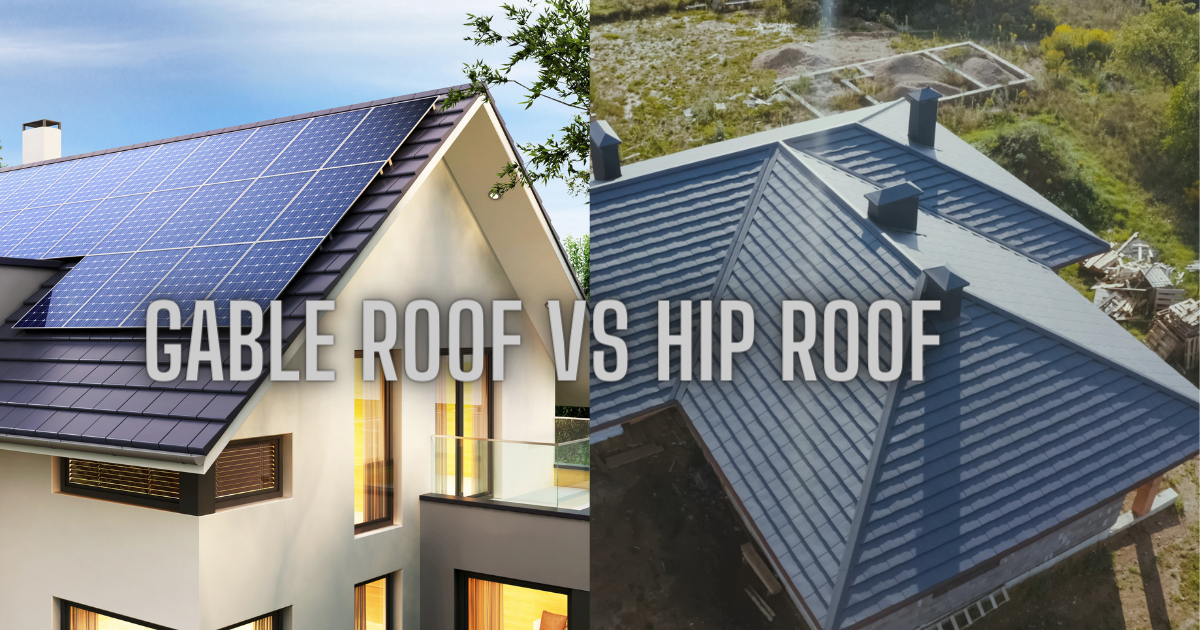
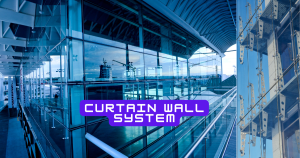
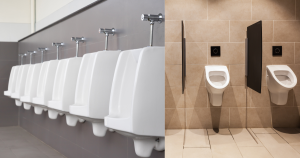
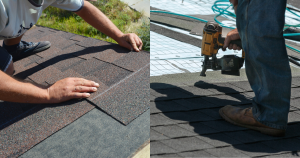
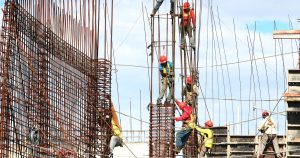


1 thought on “Gable Roof Vs Hip Roof: A Comparative Analysis”